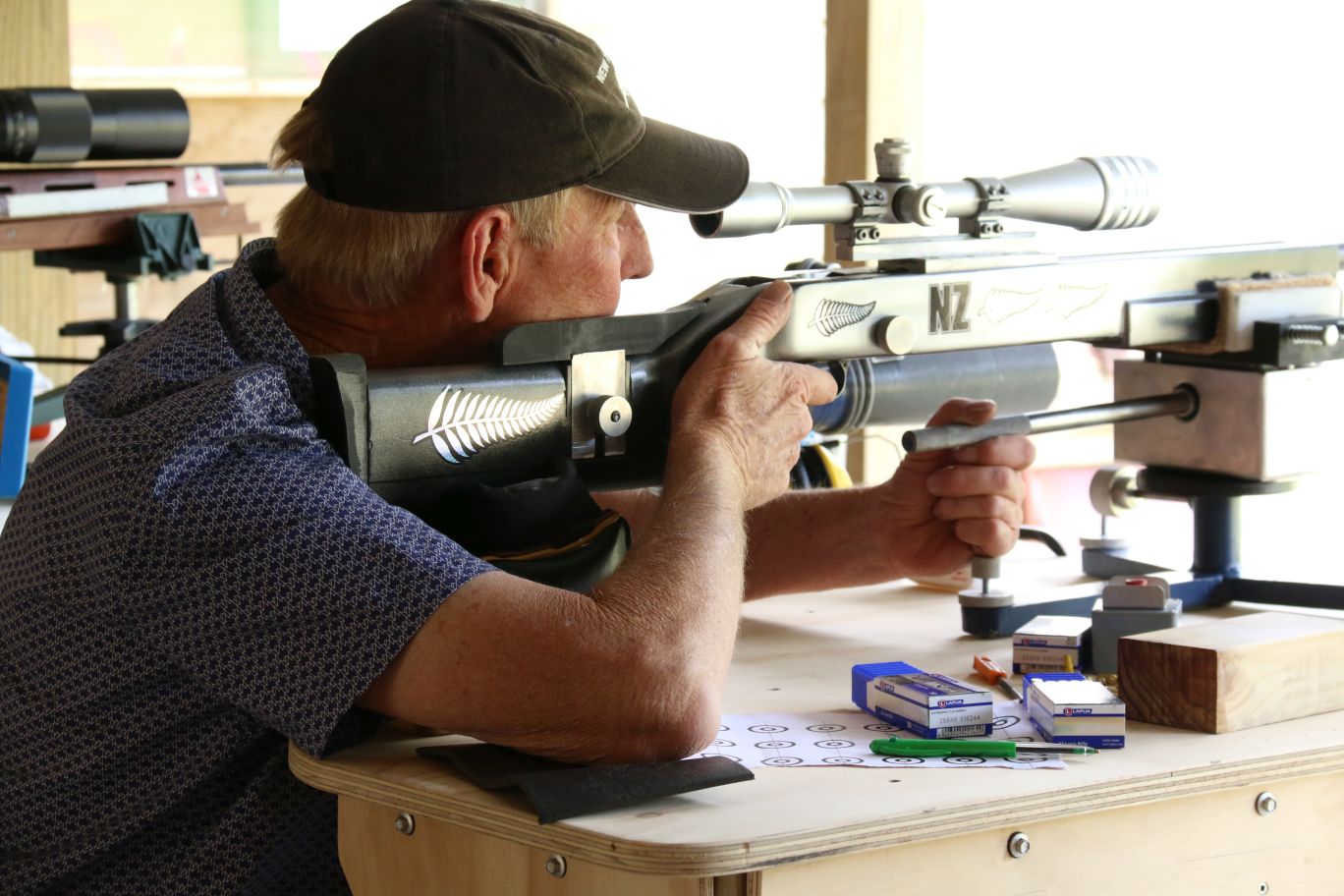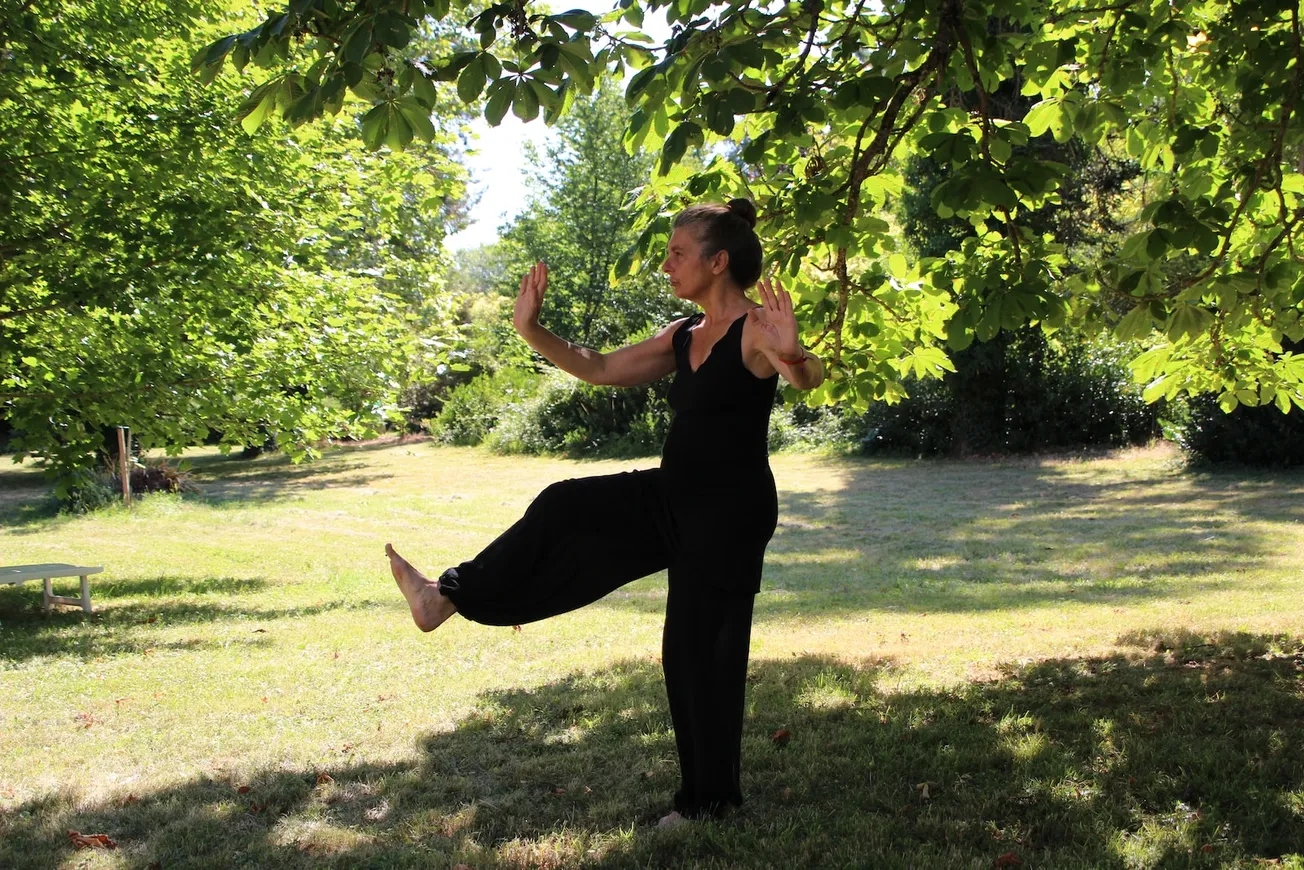OAP
The rests.
Having dealt with the choice of scope, it is time to consider the rests. If you can’t see it, you can’t hit it. If you haven’t got a steady rest, you cant hit it either.

In the photo above, you will notice the foreground shooter using a joystick type of rest. These have the advantage that you can adjust both vertically and horizontally and the range should cover the whole of a 25 diagram target at 50m. They are very quick to use and this can help when the breeze is unpredictable (as it always is in New Zealand) and you have a window of opportunity with a steady wind direction. The shooter behind him is using a tripod rest (Caldwell, the Rock) which adjusts vertically. One version adjusts horizontally as well. I have both for different purposes.
The rearrest, under the back of the stock, can be anything, a sand bag, a sand-filled sock just as long as it stabilises the rifle. I suggest you look in Aliexpress for Benchrest supports and google Benchrest supports NZ. You will find a number of entries in both. I bought several sets of sandbag rests from Aliexpress for local use. Also several backrests with the V support configuration from a NZ sports shop.
The joystick variety are or can be, worth almost as much as your rifle, depending on the brand. The only real legal requirement is that the rifle must be able to be lifted vertically from the rests.
I would recommend the simplest effective front rest which is adjustable vertically. The simplest rests we started with were car scissor jacks with a piece of half-round exhaust welded to the top. The U shape is then lined with carpet to cushion the fore-end. I move the rest (either front or rear) to realign on the target. It is really quite easy after practice.
The Nut behind the Bolt.
Each shooter must sort out the technique for him/herself.
There are two basic styles and I have experimented with both. The first involves physical contact with the rifle. That is left hand up under the fore-end, right around the pistol grip and light pressure on the trigger. The cheek is lightly (very lightly) resting on the cheekpiece, the other, if your rifle is rock steady in the rests, involves no physical contact with the rifle except trigger finger and thumb pinching the trigger.
Over the past four years, I have compromised between the two for stability reasons. The eye relief of the scope and height above the barrel makes it impossible to use the cheekpiece. My right hand is very loosely around the pistol grip and my left hand balled in a fist (or left index finger only) steadies the pistol grip underneath my right hand. Any contact with the rifle is very light.
To avoid parallax error, your eye must be central behind the scope. The theory behind this is that any muscles used must be totally relaxed so no twitch happens when the right index finger moves. The breathing is the same as for prone shooting. Shoot on an empty chest and you have up to 10 seconds to take final aim and release the shot.
You must experiment. A target rifle is heavy enough that it doesn’t need to be held down but if you feel more comfortable, rest your left hand lightly on the top of the scope. Nothing must touch the barrel.
Tuning the Rifle for Ultimate Accuracy.
This is a complex subject and many good articles can be found in Google, so the research is up to you but there are several things you can do.
Firstly get your technique consistent. Many points are lost through poor technique. Secondly, experiment with reputable brands of target ammunition (subsonic) until you can shoot a group with the least vertical displacement. Horizontal is less significant.
Imagine your rifle as a piece of wire stretched between two points. Tap one end of the wire and watch the wave travel along the wire. Basically, the barrel does the same thing so you want a speed of bullet that exits the muzzle with the vibration at its centre point. Each brand has the velocity and a batch number printed on it, so once you have found one that works consistently, buy it in quantity. I try to get a case of 5000 at a time if I find a good one and that would last about two years with the present comps. SK products are remarkably consistent and most of us in the group use it.
With the info in these articles, you should be confident to start benchrest indoors. Outdoors is the same but different as the wind has a major effect on flight and point of impact.
If anyone is in the Nelson area and would like to “have a go” I can be contacted through Target Shooting Nelson. Renegade also has my email contacts.
Good shooting!
If you enjoyed this BFD article please share it.









